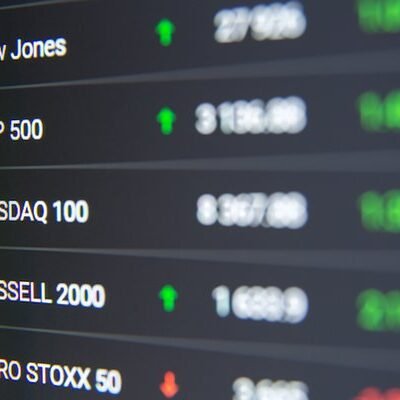Small-growth funds have lagged over the past year, delivering the worst returns among the nine Morningstar Style Box categories. However, small-growth stocks now appear undervalued, with the Morningstar US Small Growth Index trading at a 9% discount to its fair value estimate.
To screen for the top-performing funds in this category, we looked for those with the best returns over the last one-, three-, and five-year periods. Both names that passed the screen are actively managed.
Small-Growth Fund Performance
Over the last 12 months, small-growth funds have returned 1.81%. On an annualized rate, they have returned 1.17% over the last three years and 14.24% over the last five. Meanwhile, the Morningstar US Market Index has returned 11.19% over the last 12 months, 9.55% per year over the last three years, and 20.25% per year over the last five.
What Are Small-Growth Funds?
Small-growth portfolios focus on faster-growing companies whose shares are at the lower end of the market capitalization range. They tend to favor companies in up-and-coming industries, or young firms in their early growth stages. Because these businesses are fast-growing and often richly valued, their stocks tend to be volatile. Growth is defined based on fast growth (high growth rates for earnings, sales, book value, and cash flow) and high valuations (high price ratios and low dividend yields).
Screening for the Top-Performing Small-Growth Funds
To find the best small-growth funds, we looked at returns data from the past one-, three-, and five-year periods using data in Morningstar Direct. We screened for open-ended and exchange-traded funds in the top 33% of the category using their lowest-cost primary share classes for those periods. We excluded funds with assets under $100 million and analyst coverage that was not 100%. This left two names.
Because the screen was created with the lowest-cost share class for each fund, some may be listed with share classes that are not accessible to individual investors outside of retirement plans, or they may be aimed at institutional investors and require large minimum investments. The individual investor versions of those funds may carry higher fees, reducing returns to shareholders. In addition, Medalist Ratings may differ among the share classes of a fund.
T. Rowe Price Institutional Small Cap Stock Fund
- Morningstar Medalist Rating: Bronze
- Morningstar Rating: ★★★★
Over the past year, this $4.3 billion fund has gained 5.57%, while the average fund in its category is up 1.81%. The fund, launched in March 2000, has climbed 3.63% over the past three years and 15.63% over the past five.
“This strategy’s new manager is just getting started, but he’ll continue to benefit from a proven process that can lead to benchmark-beating results. Manager Alex Roik assumed sole control here in January 2024 from Frank Alonso, who remains with the firm in an advisory capacity. Roik was Alonso’s associate manager and figured to play a role in the succession plan, though he probably took over earlier than the firm anticipated. He shares some similarities with his predecessor but has started to shape the portfolio to fit his preferences. For instance, he sold some smaller holdings at the tail of the portfolio where he felt the thesis wasn’t materializing. He’s also expressed a more catalyst-driven approach for value stocks as opposed to relying on long-term mean reversion in business fundamentals and valuation.”
—Adam Sabban, senior analyst
Wasatch Core Growth Fund
- Morningstar Medalist Rating: Silver
- Morningstar Rating: ★★★★★
This $4.5 billion fund has climbed 3.34% over the past year, outperforming the average fund in its category, which rose 1.81%. The fund, launched in January 2012, has climbed 5.34% over the past three years and 17.56% over the past five.
“The key to Taylor’s winning ways here is the strategy’s focus on patiently investing in profitable, strongly competitive firms. While on balance this is a small-cap strategy, that approach typically leads it into more-established businesses that are beginning to compound their returns. Although Taylor’s lengthy record here is impressive, the strategy’s edge over small-growth Morningstar Category peers and the best-fit Russell 2500 Growth Index has only widened since the current management team of Taylor, Lambert, and Valentine formed with Valentine’s appointment in August 2017.”
—Tony Thomas, associate director
This article was generated with the help of automation and reviewed by Morningstar editors.
Learn more about Morningstar’s use of automation.





